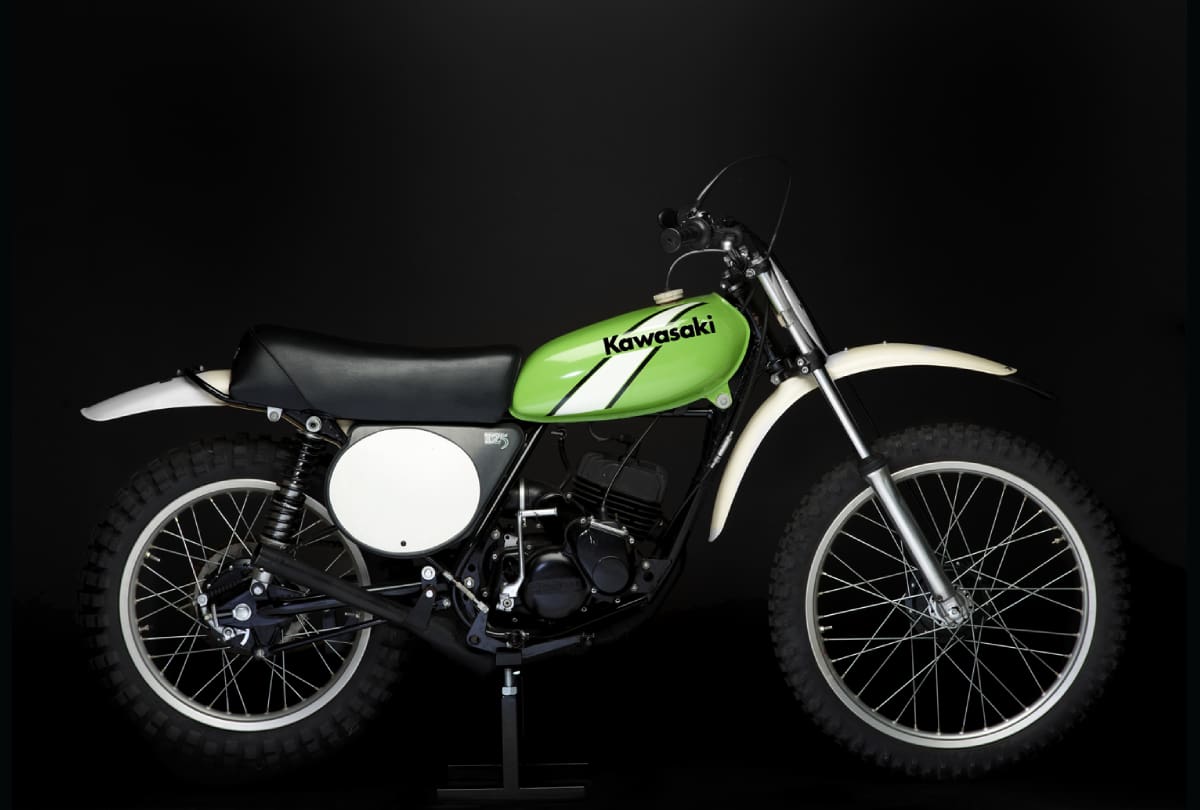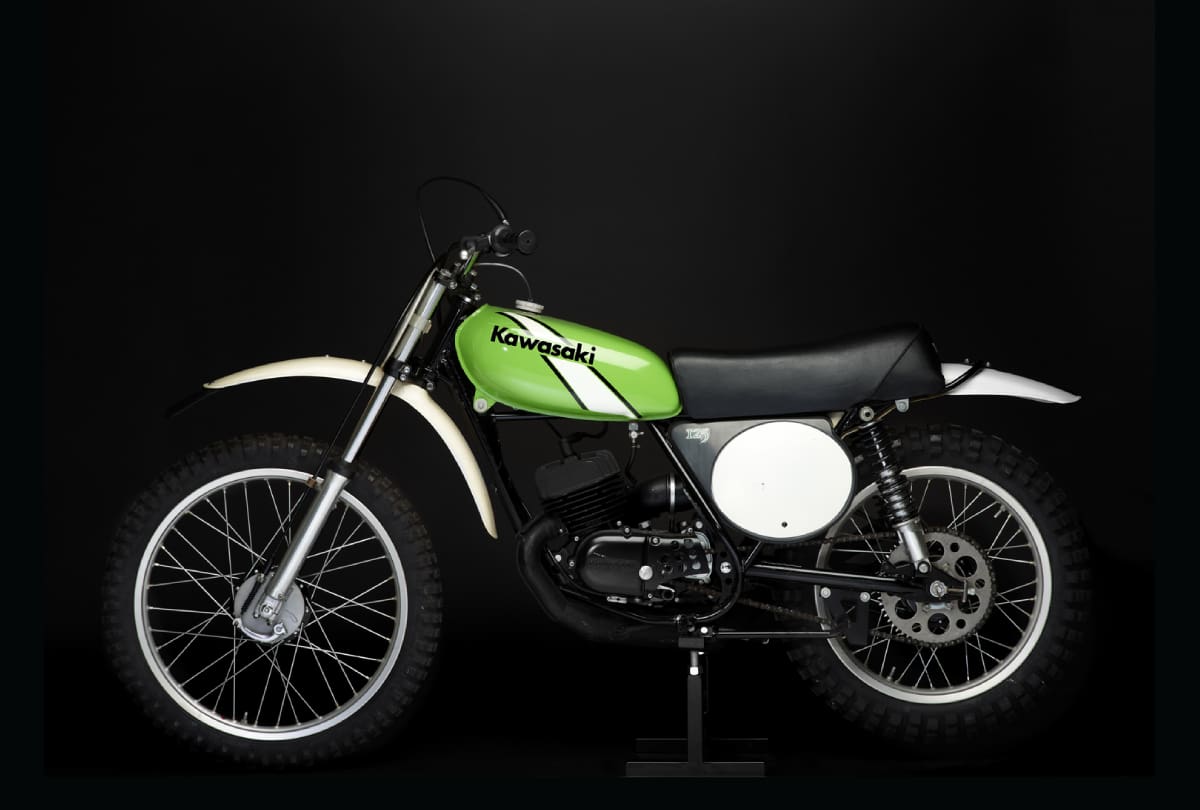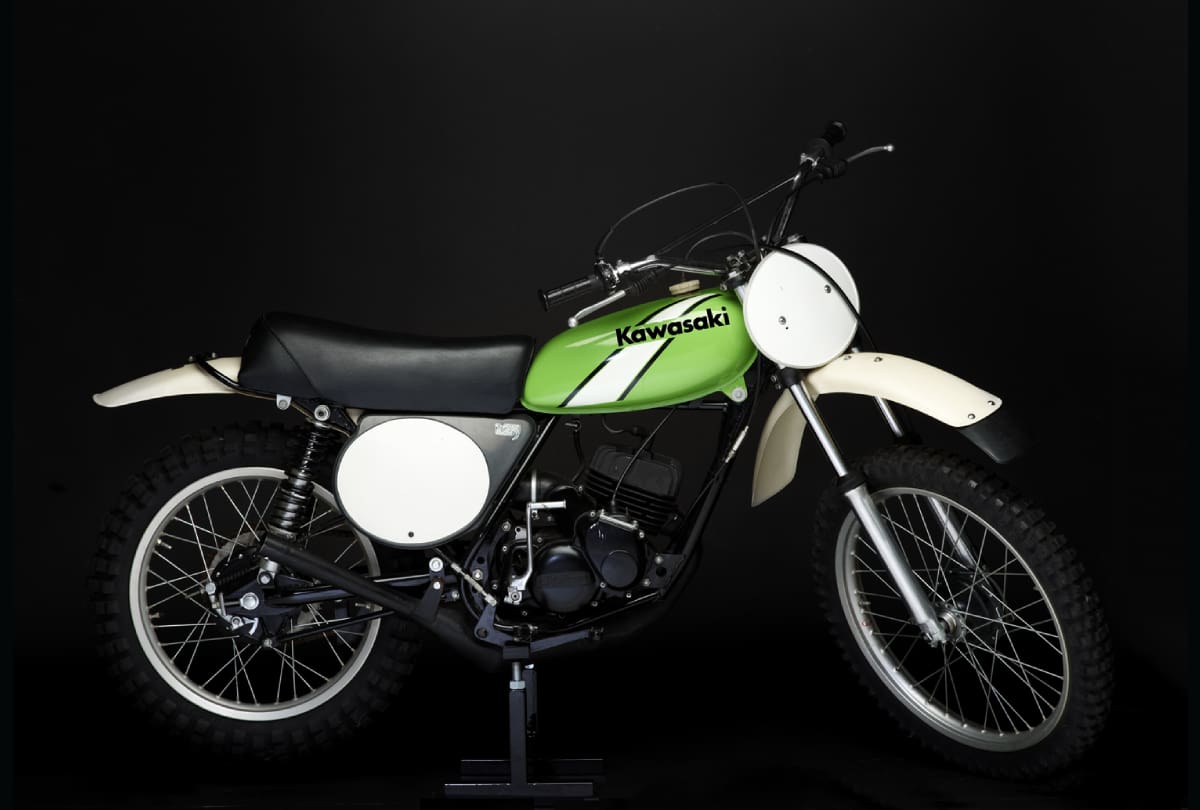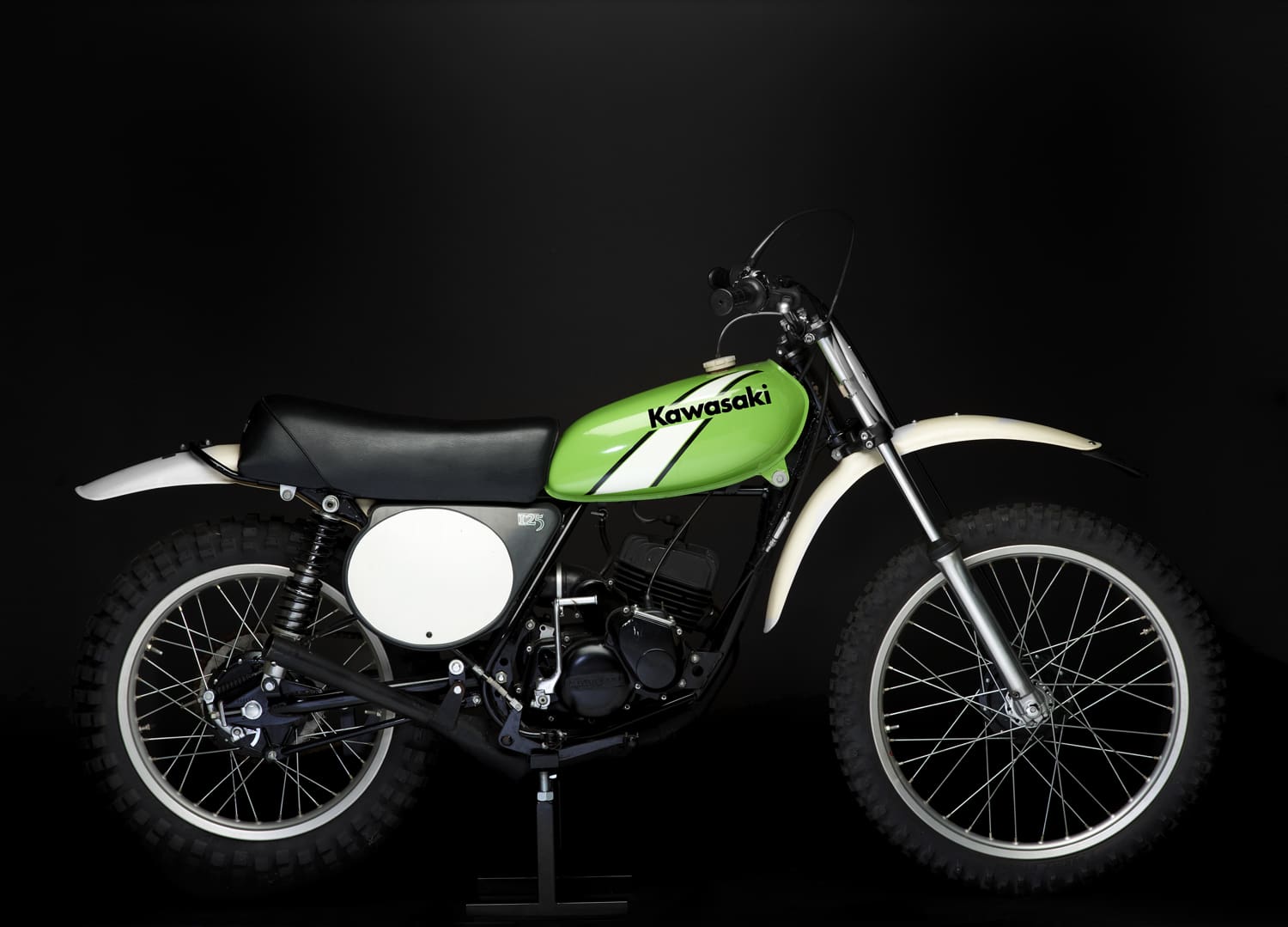1974 Kawasaki KX125
Model Information
Suggested Retail $840 Claimed Weight = 199 wet
With the YZ, TM, and CR already on the market in the US, let alone scores of Euro 125’s; the KX was late to the party. As MXA stated “Various reasons have been thrown out by the factory as to why they are in such short supply – production schedules, materials, energy crisis, etc. – but we have also found out there were some teething problems, and we think this is one of the primary reasons for the short supply.” The bike was so late in fact that MXA listed it as a 1975 model in their Feb 1975 issue.
Being fashionably late seemed to work for the new first-year KX. Although it was very similar to its trail bike brother the KS125, many magazine tests rated its rotary valve motor better than the Elsinore. One magazine stated “it has the best power band of any 125 on the market, as wide as Muhammad Ali’s mouth.” Conversely, Cycle magazine said, “this one is for motocross only because the power band is far too narrow. Even for MX, you will need tap dancing lessons to give your foot the speed it needs to keep the gearbox in step with the engine.” And “In short, Kawasaki has leapt into the 125 class with a bike capable of winning in the hands of a good rider.” Pretty impressive considering that the 250 and 450 models received extensive prototype development and testing in competition by Weinert and Lackey where the 125 received none. “Even the bike Eddie Cole (KX Team Rider) races is nothing more than a pre-production model that is almost identical to the ones customers will be able to buy.”
In theory rotary valve motors were expected to out power piston-port designs, yet the rotary valve-less Elsinore had more peak horsepower.
In fact, Preston Petty entered their test bike in the Hopetown GP, but it DNF’d on the first lap with a broken throttle assembly.
At a retail price of $840, it was less than the YZ and CR and only slightly more than the TM. Although the KX was light, powerful, and reliable, sales suffered from a weak distribution network and lack of performance parts from the aftermarket companies. Finding OEM parts for the first year KX models today is extremely difficult.
The good: tires, spokes, DID rims, black anodized hubs, brakes, and pegs.
The bad: Shocks with 3” travel (not the hammerhead oil reservoir versions found on the 250 and 450), ear splitting down pipe with flared stinger, the forks bottomed, and the frame was too flexible.
New 1974 Kawasaki KX125
This is a new (NOS) first year Kawasaki KX125; serial #2. The second production KX125 ever produced.
A friend of a friend knew this bike existed and after about six months of trying to obtain the owners contact information, he finally relented and gave it to me. The owner at the time was a great guy out of the Toledo Ohio area. He was a Kawasaki enthusiast who grew up racing early year KX’s and at some point I believe he owned a Kawasaki dealership.
He explained to me that before Kawasaki Heavy Industries (KHI) consolidated their headquarters in California, they had somewhere between 2-5 regional distributors that supported the network of Kawasaki dealers across the US. Kawasaki was late in releasing their first year KX125 and as one of the magazine tests stated, there were numerous excuses. As a consequence, Kawasaki made the decision to ship one bike to each distributor who could then show them to the dealers to reassure them that the production bikes were coming soon. To assure that these pre-production bikes weren’t ridden or tested, none of these bikes had cranks.
Years later, when Kawasaki decided to replace their distributors with a single headquarters in California, they instructed the midwest distributor who still had this pre-production KX125 to give the bike as a token of appreciation to one of their loyal dealers. The receiving dealer apparently displayed this bike on their showroom for many years. They ultimately fell on hard times and in the process of closing their business sold the bike to someone locally.
The buyer later sold the bike on eBay where it was purchased by the person I acquired it from. The story is even more intriguing but for lack of space is not detailed here. Possibly it was because this bike is serial #2 that it was never parted out, neglected, or made into a rider. Whatever the reason, I’m extremely thankful that this amazing piece of early motocross history has survived.



